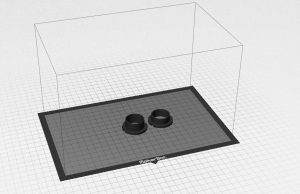One of the best things about having a 3D printer available is that it allows for quick solutions to otherwise frustrating problems.
In this case, the MFA|EDA program was loaned a part for the optical printer that would allow for the duplication of Super8 film in addition to 16mm film. However, the loaned part came from a slightly different model of optical printer and so things didn’t quite fit right. However, the piece on the optical printer that was causing the problem only needed a very slight alteration, and was already a plastic part, so I decided to try making careful measurements and modeling a new piece with slight alterations for 3D printing. The end result was a piece of equipment with twice the utility, using a fix that would have otherwise been costly or extremely time consuming. The total modeling and printing time came to about 2 hours, the majority of that being printing time.
The original part:

Two 3D models with slight alterations, made in SketchUp:


The newly printed piece next to the original:
Success! Now the optical printer can be used for multiple film sizes, and all it took was a little 3D modeling.










